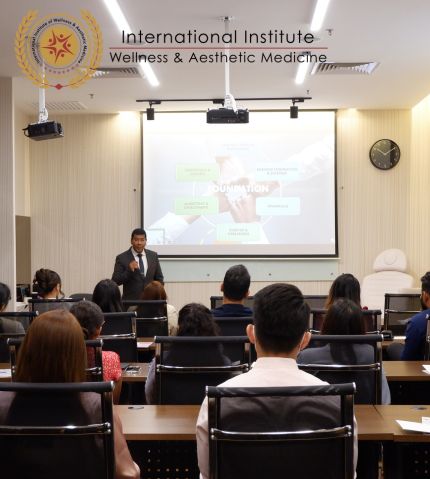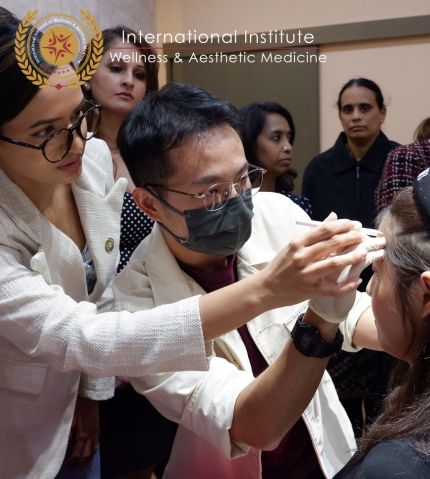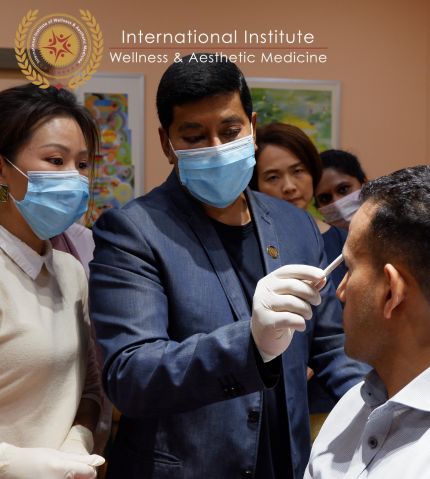What Types Of Skin Treatments Can You Learn From Aesthetic Skin Courses?
In today’s article, Prof Dr Morthy, the Course Director of International Institute of Wellness & Aesthetic Medicine will discuss various skin treatments that an Aesthetic practitioner can learn.
Various non-surgical aesthetic treatments have been developed with advancements in science and technology to bring out your natural beauty and make your skin look flawless over time. Aesthetic procedures using lasers, fillers, peels, and similar topical elements, are easy on your body and have long-term effects.
Various aesthetic procedure for skin includes-
Chemical Peels
Even though considered obsolete compared to lasers, chemical peeling is still a popular aesthetic treatment procedure to treat various skin issues such as acne scars, wrinkles caused by sun damage and aging, age spots, freckles, and dark patches, along with many others.
During this procedure, targeted cutaneous layers of the epidermis are chemically exfoliated with the help of a specific caustic agent. It causes a rapid, predictable exfoliation to a desired cutaneous depth, which in turn results in an overall improvement in the appearance of the skin. The main aim of a chemical peel procedure is to remove a uniform thickness of the overall damaged and aged skin in a safe and controlled manner, allowing for normal wound healing and skin rejuvenation.
The depth of action classifies chemical peels into superficial, medium, and deep peels. The depth of the peel is correlated with clinical changes, with the greatest change achieved by deep peels. However, depth is also associated with longer healing times and the potential for complications. The aesthetic practitioner needs to control the exfoliation and inflammation to minimize the various complications involved, such as scarring and post-inflammatory hyperpigmentation, along with a few others.

Skin Needling
Acne can appear on the face when the skin pores get filled with dead skin cells, oil, and bacteria. If the skin pores get inflamed and burst, some pore walls can rupture deeper into the skin and leak into the deeper tissues, creating larger lesions and acne scars.
Skin needling is a non-laser, vertical needle delivery treatment used to treat enlarged pores and acne scarring. It involves puncturing the dermis (superficial layer of the skin) multiple times with tiny needles attached to a cylindrical roller. Micropunctures are created using microneedles, producing a controlled skin injury without damaging the epidermis. These micro-injuries lead to minimal superficial bleeding and set up a wound healing cascade with the release of various growth factors such as platelet-derived growth factor (PDGF), transforming growth factor-alpha and beta (TGF-α and TGF-β), connective tissue activating protein, connective tissue growth factor, and fibroblast growth factor (FGF). The needles also break down the old hardened scar strands, allowing them to revascularise. The migration and proliferation of fibroblasts and the intercellular matrix initiate Neovascularisation and Neocollagenesis. A fibronectin matrix then forms after five days of injury that determines collagen deposition, resulting in skin tightening for around 5–7 years in the form of collagen.

Laser Skin Resurfacing
Laser Skin Resurfacing treatment helps to rejuvenate the skin by resurfacing its upper layers. Lasers help to improve the appearance of lentigines and rhytids, eliminate photoaging, soften scarring due to acne and other causes, and treat dyspigmentation. Lasers commonly used for Laser Skin Resurfacing treatment include ablative and non-ablative Lasers in fractionated and unfractionated forms and radiofrequency technologies. The gentler non-ablative Lasers allow quicker healing, whereas stronger ablative Lasers are more effective but come with longer downtime. Fractionating the laser beam makes the treatment safer with less downtime and complications.
Clinical effects of Laser therapy are multi-fold depending on the type of Laser and wavelength.
First, heat from the Laser works to remove a predictable, uniform thickness of the damaged layer of the epidermis. As this top layer of your skin peels off, a new layer grows to replace it. The skin will then appear smoother, and the appearance of the scar, hyperpigmentation or other skin abnormalities will be less noticeable.
Second, as the damaged skin is replaced, heat from the Laser also encourages new, healthy skin cells to grow from beneath. Blood flow is drawn to the area by the heat of the Laser and provokes an inflammatory response. This, in turn, results in the stimulation, development, and deposition of new dermal collagen and elastin, along with a reorganisation of structural scaffold proteins and dermal connective tissue. This results in the rejuvenation and thickening of the epidermis and an increase in dermal volume resulting in new healthier, rejuvenated skin.
Dermabrasion
Dermabrasion is a skin-resurfacing cosmetic procedure that decreases the appearance of fine facial lines and helps reduce acne scars, scars from surgery, age spots, wrinkles, or any other skin issues. Dermabrasion can be done alone or in combination with other cosmetic procedures.
A trained and qualified aesthetic practitioner first marks the treatment area for proper execution. A local anesthetic is used to prevent pain or discomfort during the treatment. The procedure begins with a small motorized device that’s moved across the skin with constant, gentle pressure. The device has an abrasive wheel or a brush for the tip to remove the outer skin layers. Depending on the expanse of skin that needs to be treated, a dermabrasion cosmetic procedure can take between a few minutes to an hour, once or over multiple visits.
Dermabrasion causes crusting and hence patients need some downtime to recover. There is often a small pinpoint bleeding of the raw wound after the procedure that can be reduced with proper wound care.
About IIWAM training in various skin treatments
It is prudent that all Aesthetic practitioners undergo proper training in Aesthetic Medicine. The practitioner must balance between benefits & risks of the Aesthetic procedure and steps to mitigate complications if it occurs. At IIWAM, we call it understanding the procedure, the product, and the patient, and our trainers pay utmost attention to teaching the following subjects of various aesthetic skin treatment procedures under the best Trusted Online International Cosmetology Course.
Apply for the best online aesthetic courses from IIWAM today.
About IIWAM Aesthetic Education
International Institute of Wellness & Aesthetic Medicine (IIWAM) is a private teaching institution that provides International Aesthetic Medical Certification program for Doctors, Dentists, Nurses, Aestheticians, and Spa Owners. Prof Dr Morthy is the course director for the Institute, formerly known as Aesthetic Academy Asia (https://www.iiwam.ac/education).
The Institute is based in Malaysia and with academic affiliations from the Philippines, Myanmar, Cambodia, India and Indonesia. With our insignia of “Be Certified, Be Recognized”, we develop knowledgeable, skilled, and confident aesthetic practitioners of international repute. IIWAM training Programs are a combination of Onsite Training, LIVE Online Webinars, and Online Learning. IIWAM Programs are assured by City & Guilds of London and certified by European International University, Paris. IIWAM is also a registered CPD Training provider with CPD Standards Office in the UK and by CPD Malaysian Medical Association.
IIWAM also offers Cosmetic Procedures and Stem Cell treatment at IIWAM Wellness Centre (https://www.iiwam.ac/wellness) that are safe, effective, and affordable.



